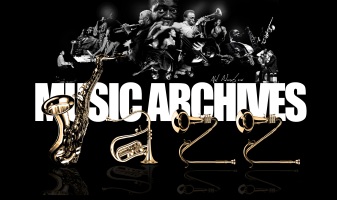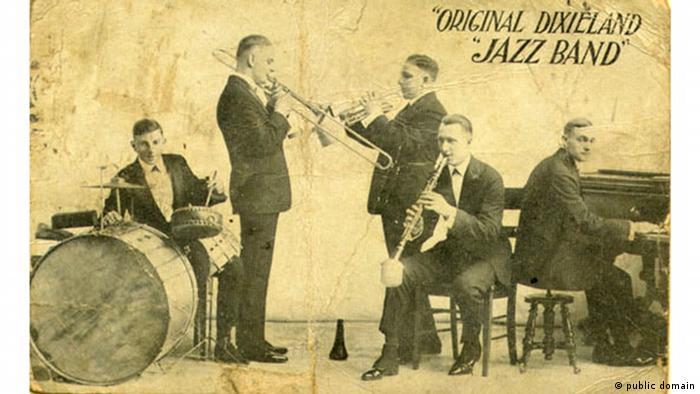
 |
Revisiting 100 years of recorded jazz |
Post Reply 
|
| Author | |
snobb 
Forum Admin Group 

Site Admin Joined: 22 Dec 2010 Location: Vilnius Status: Offline Points: 28474 |
 Post Options Post Options
 Thanks(0) Thanks(0)
 Quote Quote  Reply Reply
 Topic: Revisiting 100 years of recorded jazz Topic: Revisiting 100 years of recorded jazzPosted: 28 Feb 2017 at 6:39am |
|
The first record player was invented in 1887, but the first jazz album was recorded in 1917. Jazz expert Bert Noglik tells DW how technology has influenced the genre.
 Pioneers: The Original Dixieland Jazz BandThe first jazz album was recorded at the end of February 1917. It featured two titles, "Dixieland Jazz Band One-Step" on the A side and "Livery Stable Blues" on the B side. From this recorded event in the history of jazz, several other musicians would go on to push the genre to new levels over the century. DW: Mr. Noglik, the first jazz album was recorded in New York. How did this recording happen? Bert Noglik: The Original Dixieland Jass Band [Eds.: the name was changed to "Jazz" by mid-1917], from New Orleans, went to Chicago to perform Dixieland jazz, a sound that no one there had heard previously. At the time, ragtime was the dominant style and Dixieland was something completely new. People in New York also wanted to hear Dixieland music. The band was invited to do a gig at the restaurant Reisenweber, which was a trendy location with a nightclub in Manhattan. The band performed there in January 1917. Shortly afterwards, the record label Columbia came knocking at their door to record them. But the label found the material too hot, too innovative, so the recordings weren't released. Another label, Victor, then jumped in and recorded two tracks, "Dixieland Jass Band One-Step" for the A side and "Livery Stable Blues" for the B side, on February 26, 1917. It was a big hit, pressed as a 78 rpm record single and sold for 75 cents. It was a remarkable event for the music market and the history of jazz - as well as a tremendous commercial success.
Was 1917 really the year the first jazz album was recorded? Some sources set this event in 1904, when the German operetta king Paul Lincke recorded a jazz-like composition with the choir of the Apollo Theater in Berlin. How do you see this? This obviously depends on your definition of jazz. Without a doubt, there were earlier recordings of ragtime music and other pre-forms of jazz. However, some essential stylistic elements of jazz, such as swing, appeared much later. The recordings with the Original Dixieland Jass Band at the end of February 1917 already featured many of the characteristics of what we would later define as jazz. At the beginning of the 20th century, the record business in the US and Europe was still developing - but it probably couldn't be characterized as an industry yet? It was in its first steps. It developed over the following years. And radio only became widespread in Germany and in the US in 1923. Jazz developed a wider audience through records and radio by the end of the 1920s. Who earned money with the new jazz records at the time? The record labels, of course; they were already determining what could be marketed. Columbia was initially cautious with this new sound, but quickly jumped on the bandwagon, recording the Original Dixieland Jass Band as well. By then, Victor had already sold its first recording of them by the millions. Record companies made very good deals at the beginning. When did record sales become interesting for musicians as well? Actually, right from the start, because those records made music available anytime, anywhere - and worldwide. This was a great opportunity for musicians to become known and allowed them to play more concerts and go on international tours. In the West, the record industry rapidly developed into a huge business. What happened in divided Germany in the 1960s? How did the market differ in East and West Germany? You have to start by looking back at the first years of Soviet Occupation, from 1945 to 1949. There was a record label called Amiga, which documented very well the period's jazz production. We owe this label the most important testimonies of post-war German jazz. It later became difficult because of East Germany's strong ideological regulations. In the 1950s, jazz was considered bourgeois entertainment music, which is why authorities imposed restrictions on sales and broadcasting of jazz music. That changed in the 1960s. From then on, it became more difficult for the then already established East German label Amiga, because licenses had to be paid in a foreign currency, which was scarce in East Germany. This was also the case for the vinyl needed to press the albums. How was the situation in West Germany? In West Germany, jazz was produced by internationally operating labels such as Columbia, Brunswick, Bertelsmann or Philips. In 1964, an independent German label dedicated to modern jazz was created, called MOD Records. Towards the end of the 1950s, SABA Records was established: That was the label of Hans Georg Brunner-Schwer, which was renamed MPS, for Music Production Schwarzwald, in 1968. Sound engineering developed very rapidly. How did the new and always improving technical possibilities influence jazz? They were absolutely essential! Just imagine: At the beginning, there was this big funnel in which musicians had to play. Then the microphone appeared by the mid-1920s. That offered completely new possibilities, for example for vocalists. Crooners such as Frank Sinatra or Bing Crosby found new ways to modulate their voice with the microphone. An exceptional example is also singer Billie Holiday, who essentially developed her whole art through her work with the microphone. Record producers also became very creative with their sound engineers… Yes, exactly. Tape started being used in the 1940s. That made it possible to produce sound collages. After that, multi-track recordings appeared. Works like Miles Davis's "In a Silent Way" (1969) and "Bitches Brew" (1970) used studio technology in an extremely creative way. The producer of these albums, Teo Macero, was nicknamed "Paganini of tape cutting." Suddenly, technology became a creative tool. This continued right up to digitization. Editing became an important component of jazz production and creative jazz. Just like the new recording technologies influenced the music industry 100 years ago, how are today's downloads and streaming services impacting the business and musicians? Each storage and distribution media has had a great influence on how people receive music. Concerts used to be a way of promoting record sales. Now it's the other way around: Through music downloads and streaming, the goal of musicians is to make money through their concerts. It is becoming increasingly difficult to make money for all parties involved. Bert Noglik is a freelance author specialized in jazz who has directed the festivals Jazztage in Leipzig and Jazzfest in Berlin. from http://www.dw.com Edited by snobb - 28 Feb 2017 at 6:40am |
|
 |
|
js 
Forum Admin Group 

Site admin Joined: 22 Dec 2010 Location: Memphis Status: Offline Points: 34175 |
 Post Options Post Options
 Thanks(0) Thanks(0)
 Quote Quote  Reply Reply
 Posted: 28 Feb 2017 at 8:29pm Posted: 28 Feb 2017 at 8:29pm |
|
It should also be pointed out that the reason why the 'displaced' Africans who invented this music were not able to record first has to do with the racism in the US.
|
|
 |
|
Cannonball With Hat 
Forum Senior Member 
VIP Joined: 10 Apr 2011 Location: The Opium Den Status: Offline Points: 1211 |
 Post Options Post Options
 Thanks(0) Thanks(0)
 Quote Quote  Reply Reply
 Posted: 01 Mar 2017 at 10:38pm Posted: 01 Mar 2017 at 10:38pm |
|
I've always love that drum set, especially that big ass bassdrum.
|
|
|
Hit it on Five.
Saxophone Scatterbrain Blitzberg Stab them in the ears. |
|
 |
|
Post Reply 
|
|
|
Tweet
|
| Forum Jump | Forum Permissions  You cannot post new topics in this forum You cannot reply to topics in this forum You cannot delete your posts in this forum You cannot edit your posts in this forum You cannot create polls in this forum You cannot vote in polls in this forum |